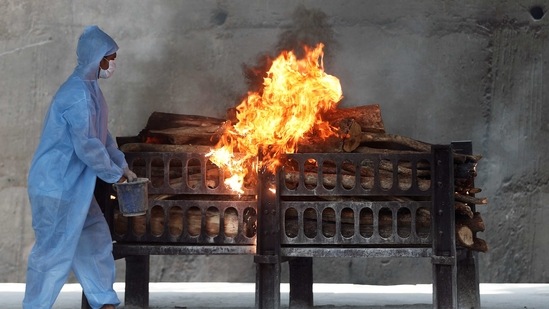Covid-19: What you need to know today
Based on health ministry’s data, India registered more than 200,000 daily new cases in the 24 hours to Thursday morning, with the actual number likely to be 10 times as high
A young population, previous exposure to other coronaviruses, and some amount of resilience in warding off or fighting the SARS-CoV-2 virus that causes Covid-19 may have all helped India flatten the curve of the first wave of the coronavirus disease pandemic, from a peak of 93,617 (seven-day average on September 16) to a low of 10,988 (seven-day average on February 11), but the three most significant factors were not any of these.

These were, in no particular order, non-pharmaceutical interventions (NPIs), mostly to do with behaviour (masking, hand-washing, social distancing) and restrictions on movement and activities; the test-trace-isolate-treat protocol that most states and territories adopted; and the fear of getting infected. It was the last that made people stay at home, not socialise, put off weddings or keep them really small, and generally behave as if going out would endanger their lives as well as the lives of those they lived with (in truth, it would have), and that it was not worth it.

Over time, the benefits of all of these kicked in, India launched a vaccine drive, and everyone thought the battle was won. States and UTs went easy on testing, tracing, and isolating; the Union government as well as the states relaxed restrictions on movement and activities, and stopped monitoring compliance with other NPIs; and, driven by a potent mix of complacence and Covid-fatigue, people let their guards down. As I first wrote on June 21 last year (#87 of my first wave of columns): “So, bored, tired, lonely perhaps, and physically, mentally, and emotionally weary, we let things slip. And the virus wins.”
Which is exactly what is playing out now. Based on health ministry’s data, India registered more than 200,000 daily new cases in the 24 hours to Thursday morning, with the actual number likely to be 10 times as high. Some worthies would like people to take comfort in the fewer deaths this time around, but as Jamie Mullick, who has probably done the best data journalism around the pandemic, wrote in HT, assuming a steady case fatality rate of 1.1%, it is clear that the death rate is inching up. This is best illustrated in his chart mapping the trajectory of cases (blue) and deaths (red). Reports coming in from some parts of India seem to suggest that the actual number of deaths could be higher. That’s entirely possible. Assuming that India was reporting deaths accurately in the first wave, and an infection fatality rate (deaths as a proportion of infections) of 0.1% (Dispatch 152 , published on September 8, explains how I arrived at this number), 2 million cases a day translates to 2,000 deaths. If all cases of Covid-19 are not being recorded, it stands to reason that all deaths on account of Covid-19 are also not being counted. Most states and UTs have also been quite brazen in their violation of an Indian Council of Medical Research guideline from last year requiring that a test be conducted on those suspected to have died from Covid-19.
The big gap in our knowledge is whether the sudden surge in cases is being caused only by the factors discussed above, or if mutant strains of the virus (the co-called variants of concern) are at play. That is something only genome sequencing can tell us, and we are not doing enough of it. Still, NPIs will clearly work even when the infections are being caused by VOCs. So, what should India do now?
One, everyone, governments, political leaders (if a private car can be considered a public space, what can be said of the stage for a political rally?), and all of us, need to get serious about NPIs.
Two, governments need to accelerate testing (there’s simply nothing to be gained if the waiting time for a result is 2-3 days), tracing, and isolating.
Three, the vaccine drive needs to be expanded and accelerated, which would entail ensuring more supplies, and dynamically redefining eligibility criteria.
And four, India, which is one of the world’s leaders in the manufacture of small molecule drugs (even more than it is in vaccines), should start working with companies on some very promising lines of therapy. More on this in the next instalment.





